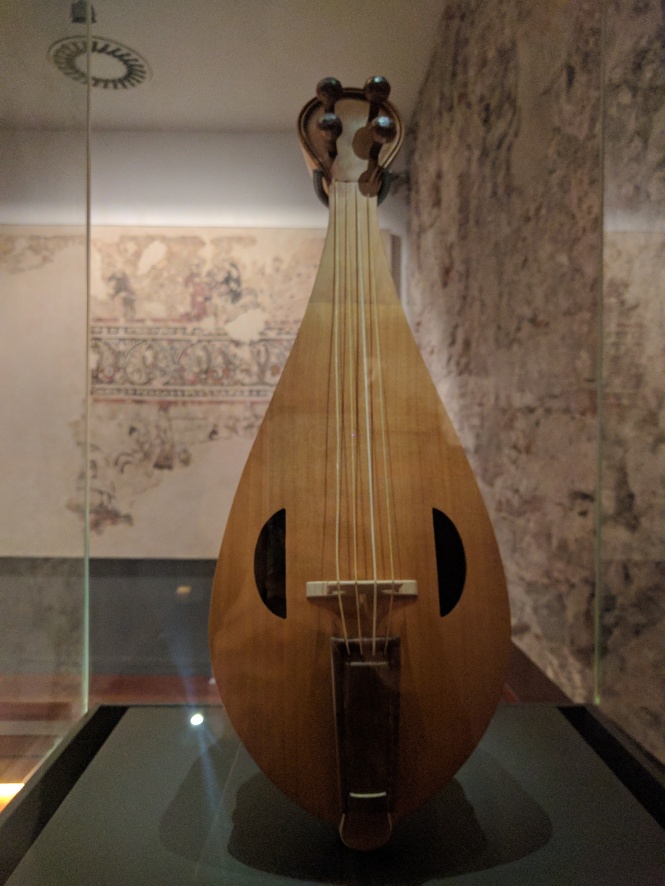I recently returned from a trip to Spain which was, unlike most of my international travel, entirely for pleasure! I had never been to Spain before, and it was thrilling to try to experience as much as I could in the cities of Barcelona and Madrid in a short amount of time. Despite being centered around cured meat and cheese (and very few vegetables aside from pimentos), the food was very appetizing, and the many museums that I visited were enthralling. What I especially enjoyed seems to be typical of European cities: engaging street musicians.

I’ve busked often in my life, not to pay for my travel, but to enhance my visit with a little extra spending money. Busking, or playing on the street for donations, is good practice for sight reading, and it has trained me to be able to talk, move, and generally be more flexible when I’m playing my instrument. Soliciting money in this way can get competitive, especially in Europe where the variety and quality of street musicians varies greatly. I observed many guitarists busking as I traveled in Spain, but to my dismay, most of them were equipped with amplification systems to attract a larger crowd. Amplification seems less authentic to me, and I don’t like what it does to the tone quality of acoustic instruments.
Here are some examples of the music I heard on my trip:
Sardana, a dance that is symbolic of Catalan unity and pride, being danced in front of the Cathedral in Barcelona. A “cobla,” a small group of musicians, accompanies the dancing.
Flamenco, a combination of folkloric musical styles, includes singing (cante), guitar playing (toque), dance (baile), vocalizations (jaleo), clapping (palmas), and finger snapping (pitos). How much of this is improvisatory is unclear to me!
Choir singing religious music outside the Barcelona Cathedral on Palm Sunday.
Marching bands in parades for Holy Week.
Various other buskers: outside the Picasso Museum, outside of the cathedral in Barcelona, in the El Born neighborhood near our Airbnb, in the park in Madrid, on the street in Madrid
Additionally, Ben and I indulged in some classical music. We perused a bunch of Spanish string repertoire at a small shop on La Rambla in Barcelona (and purchased some sheet music to take home), and we saw instruments in some of the museums.

Most notable – and frustrating – was the quartet of Stradivari instruments at the Royal Palace of Madrid. These are the only decorated instruments the maker is known to have made as a set, and it includes his only decorated cello. Some sources say that in 1702 King Philip V, during a visit to Cremona, offered to commission the quartet from Stradivarius, but delivery was delayed. There was some ensuing confusion involving Prince Charles IV of Austria which resulted in the set being brought together. Although the violins and the cello never left the royal palace once they had arrived, the viola was seized by the French at the end of their occupation in 1814. Five, of the only eleven known decorated Stradivaris, are at our Smithsonian Institutes in Washington, D.C.
However, I learned about them after our visit (and audio guided tour) of the Palace because neither the guides (audio or in person) nor the printed literature in the gift shop had any information on them other than the name of their famous maker. Supposedly, these instruments are used for annual performances, but I couldn’t find information about what quartet receives the honor of their use. As typical with violins from Stradivari’s time, the necks of all these instruments have been altered, but I was puzzled to see the upper string instruments strung with Evah Pirazzi and Vision strings — not Dominants, as I have seen most often with Stradivari violins — and bridges carved by an unknown craftsman from New Jersey (no shop affiliations, no reviews on forums, etc)! How could it possibly be cost-effective (or even musically preferable) to send such a prized set of instruments across the world for repairs? Photos weren’t allowed, so we did the best we could!
Here’s what we saw of the Palau de la Música Catalana in Barcelona (we missed the only tour that day):








